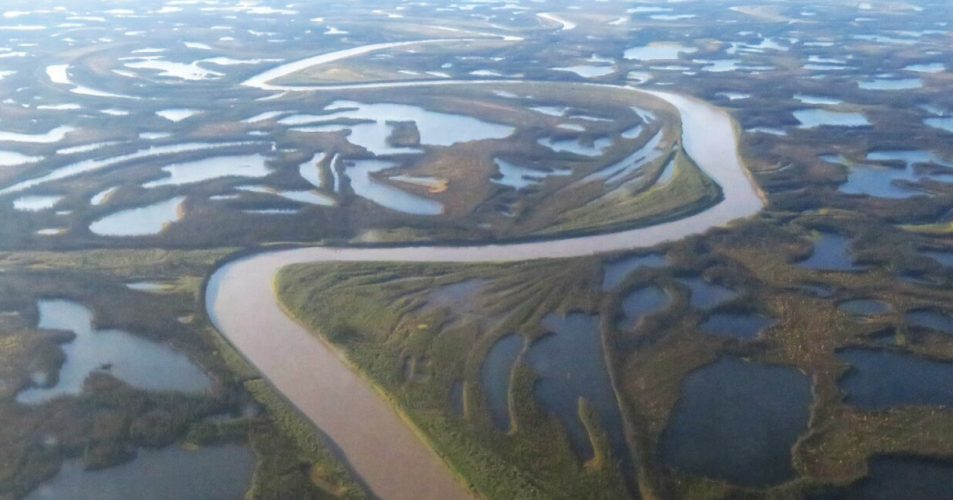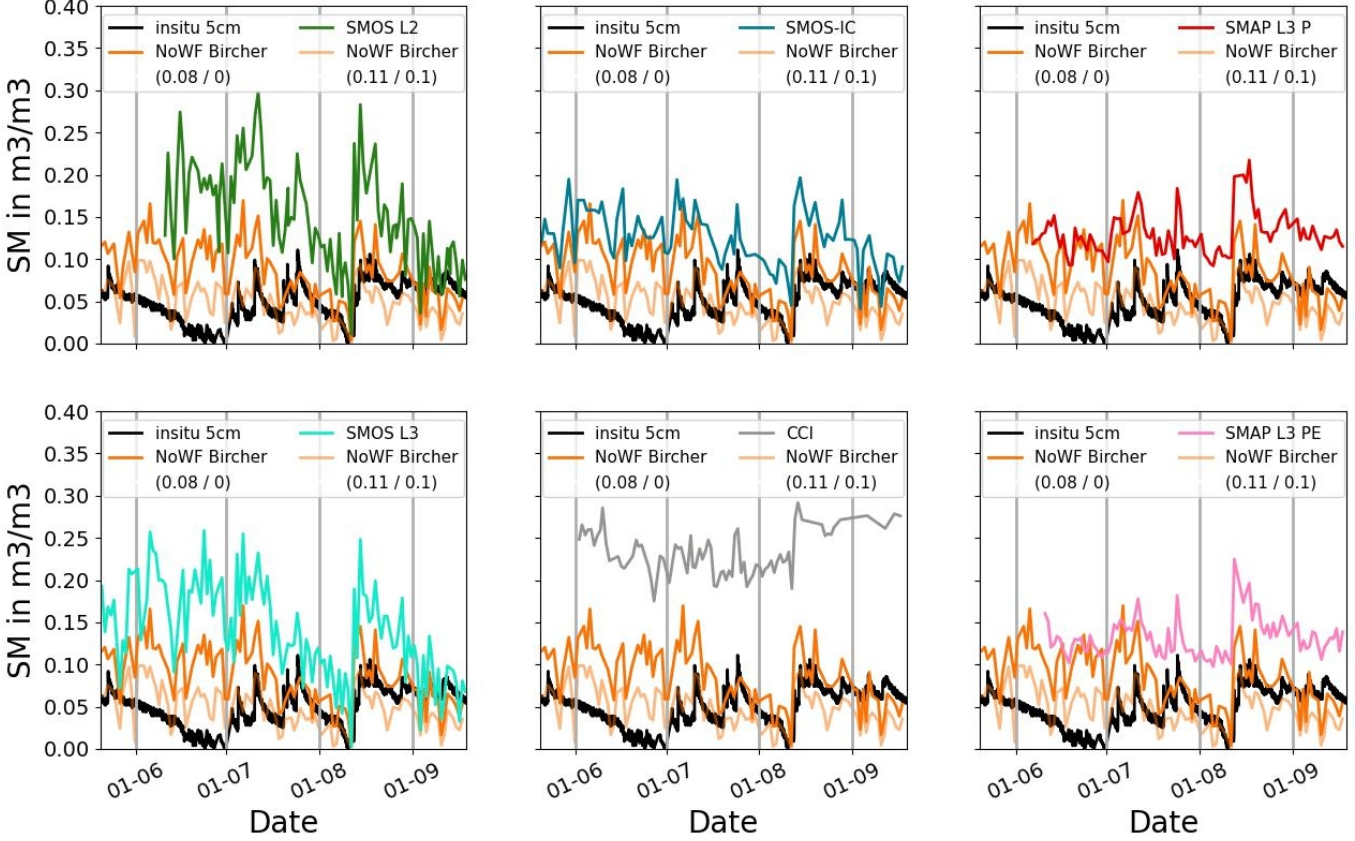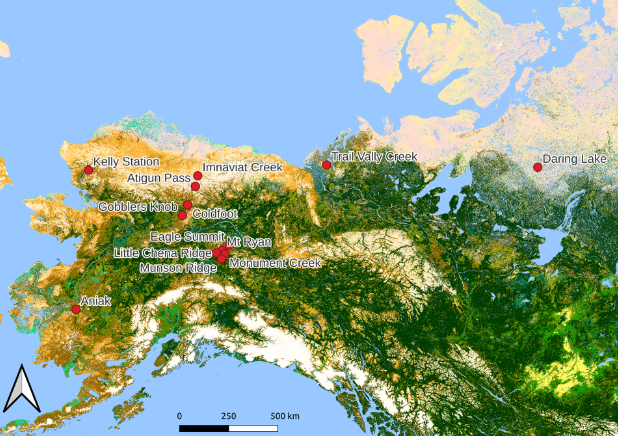
© Julia Boike – View of the Mackenzie Delta with its open water areas (lakes and meandering rivers)
In a previous post, we mentioned the ongoing research to explore new areas with SMOS data, especially towards high latitudes. Today, we focus on what passive microwave measurements can tell us about soil moisture for the unfrozen soils in the Northwestern American Arctic. The peculiarities of these areas are the organic content of the soil and the significant presence of open water : a real challenge to take into account in the retrieval algorithms.
Challenges posed by open-water area
A new paper investigates the performance of passive microwave satellite to retrieve soil moisture in the northern high latitudes. In-situ data from 13 reference stations have been compared with satellite products (SMOS/SMAP and data from ESA’s Climate Change Initiative). Following figures illustrate – among other things – the difficulty posed by open water, for which data are either not available or could be improved :

Soil moisture sites distribution (background: ESA CCI L4 map at 300m, Version 2.0.7) and RMSD performance of satellite products for each site. Landcover group are: (1) sparse vegetation, (2) shrubland, (3) tree cover, (4) open water.
Algorithm tuning for open-water free area
An inversion model for SMOS soil moisture retrieval was adjusted. It uses Bircher’s dielectric constant model (better adapted to organic soils) and the (0.08 / 0) pair for soil roughness/single scattering albedo. Such tuning improves the retrieval, but discrepancies remain to be understood :

Soil moisture estimation during summer 2017 at Mount Ryan. Timeseries of the soil moisture are compared to in situ data (black) and to data retrieve with the new inversion model (orange and light orange). Timeseries with the best overall configuration (0.08 / 0) are represented in orange and timeserie using the best configuration at Mt Ryan (0.11 / 0.1) in light orange. Only area without water fraction are considered.
These studies conducted by J. Ortet show the potential for soil moisture retrieval from passive L-band but also the remaining challenges. They highlight the interest of higher-resolution data (SMOS and SMAP instrumental resolutions are ~43km) which could provide a much better coverage (as open water areas are filtered out). The long-term goal of these studies could be to monitor the permafrost from space using soil moisture. Indeed, this variable can provide information on flora and fauna, the carbon cycle, but also improve climate predictions…

